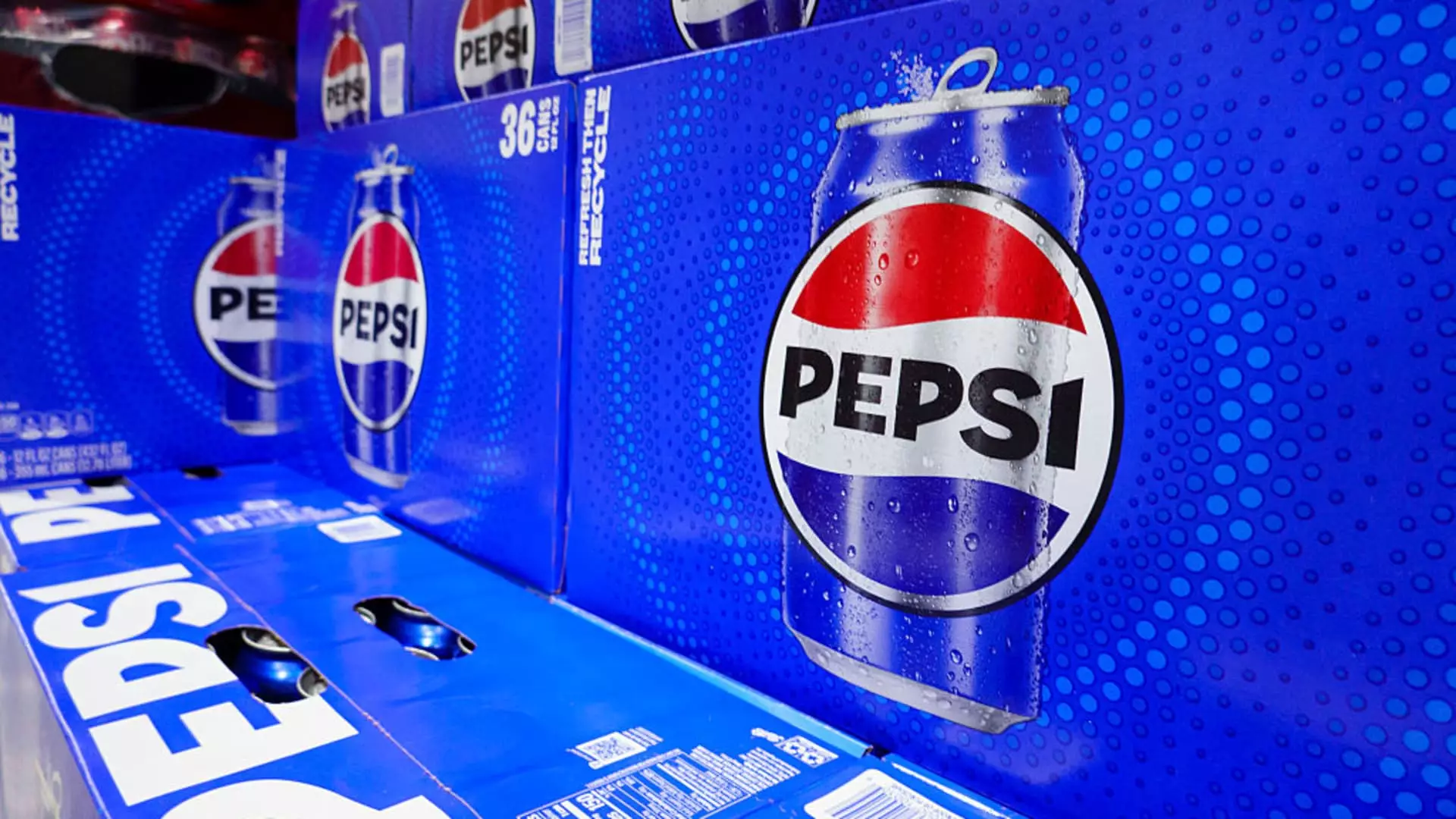PepsiCo, a titan of the beverage and snack industry, recently celebrated a quarter that superficially beat Wall Street expectations. Yet beneath this veneer of success lies a fragile reality. The company’s reported revenues and adjusted earnings per share exceeded forecasts, but the underlying numbers tell a story of struggle rather than triumph. Revenue increased marginally to $22.73 billion, and organic growth ticked up by 2.1%. However, this growth is amid pervasive demand softness, evidenced by a 1.5% decline in worldwide food volume and a flat beverage volume, including a 2% dip in North American drinks. These declines highlight the challenges of maintaining market share in an increasingly competitive landscape resistant to traditional marketing and product reliance.
Pepsi’s leadership is projecting a cautious recovery, with CEO Ramon Laguarta forecasting that earnings growth will hit the lower end of their 4-6% target only after “a few quarters” of strategic adjustments. This reveals a reluctant acknowledgment of an anemic bottom line masked by superficial macroeconomic indicators. While share prices surged more than 6% after earnings, this rally appears premature—an optimistic market acting on hope rather than tangible growth fundamentals.
Strategic Repositioning: A Last-Ditch Effort or an Enlightened Pivot?
The company’s blueprint for rejuvenation revolves around shifting focus toward healthier snacks and multicultural offerings, a move that appears to be more reactive than proactive. While aligning with current consumer health trends is sensible, Pepsi’s heavy investment in these niche markets risks overextending the brand’s scope without guaranteed payoff. The decision to relaunch stalwart assets like Lay’s and Tostitos emphasizes core products, yet it raises questions about whether these efforts address deeper issues of product differentiation and consumer engagement.
Pepsi’s attempt to “lean into” protein and multicultural products—like Siete Foods and Sabra—sheds light on a strategic desperation. They are chasing trends rather than setting them, hoping to realign the product portfolio with shifting consumer preferences. However, consumer loyalty, especially within established brands, is difficult to recapture once lost. The core problem remains: declining demand, especially in North America, suggests that simply tweaking offerings isn’t enough to turn the tide.
The company’s efforts to enhance in-store visibility and distribution are important tactical moves, yet they seem more like band-aids than cures. When volume declines persist despite these adjustments, it indicates a fundamental disconnect between Pepsi’s offerings and consumer desires. The company’s plan to cut costs—including closing manufacturing plants—also signals that profit margins are under significant pressure, and there’s little confidence in organic growth alone to sustain profitability.
The Risks of Overcorrecting in a Volatile Environment
Pepsi’s strategic decisions—cost-cutting, marketing re-evaluations, supply chain efficiencies—are emblematic of a company scrambling to maintain margins in a hostile economic climate. With tariffs, inflation, and cautious consumer spending weighing heavily, these measures might buy short-term stability but do little to foster long-term growth. It’s a high-wire act: trying to increase efficiency while risking the potential alienation of consumers craving innovation rather than austerity.
The company’s focus on cost reduction through plant closures and logistics optimization could easily backfire if it diminishes product availability or quality. The tightrope walk between trimming excess and maintaining brand integrity is perilous, especially when consumer trust is no longer a given. Additionally, the reliance on commuting positively on double-digit growth for Pepsi Zero Sugar is somewhat superficial; it suggests that while some segments experience trials and wins, they do not necessarily translate into broad-based revival.
Furthermore, Pepsi’s stance on maintaining its full-year outlook amidst an environment filled with uncertainty showcases either cautious optimism or strategic bluffing. Their expectation of near-stagnant earnings per share reflects a company aware that it is fighting hard to keep pace with a shrinking or shifting marketplace.
Ultimately, Pepsi’s strategies reveal a mixture of reactive policies and hope-driven innovation. Without genuine engagement with emerging consumer needs—beyond superficial repositioning—the company risks becoming a cautionary tale of how even industry leaders can flounder when they refuse to fundamentally adapt to the evolving economic landscape. In a world increasingly dominated by health-conscious and socially conscious consumers, Pepsi’s effort to retrofit its existing model may be too little, too late.

